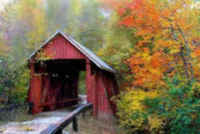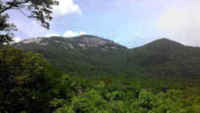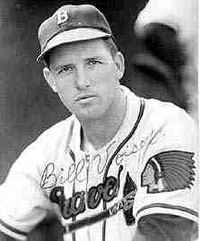
South Carolina State Facts - History Firsts
Catch up on your state trivia with these South Carolina history firsts and interesting fun facts about the state.
| Official Name | South Carolina |
| Capital | Columbia |
| Location Region |
34.03923 N, 080.88634 W South |
| Constitution Ratified | 1895 |
| Statehood | May 23, 1788 8th state |
| Number of Counties | 46 Counties in South Carolina |
| Largest County (by population) |
Greenville County 379,616 792 sq. mi. |
South Carolina History Firsts & State Facts
- 1521 - First European contact with native Americans - by Spanish at Winyah Bay in June 1521.
- 1562 - First French settlement - Parris Island in 1562.
- 1566 - South Carolina was first settled by the Spanish in 1566 and later became an English colony.
- 1629 - Charles I of England granted "Carolana" to Sir Robert Heath.
- 1663 - Charles II of England granted "Carolina" to eight Lords Proprietors - March 24, 1663.
- 1670 - First English settlement - Charles Town (1670 - named for Charles II)
- 1710 - Separated from North Carolina.
- 1719 - Lords Proprietors overthrown - December 21, 1719
- 1740 - The oldest formal gardens in the US, Middleton Place, was founded in 1740 and took 100 people more than 10 years to complete.
- 1767 - The Saint Cecilia Society, organized in 1767, sponsored America's first symphony orchestra.
- 1776 -
- First state constitution signed - March 26, 1776 (John Rutledge elected president)
- America's first military victory - British fleet defeated at Battle of Sullivan's Island (June 28, 1776)
- Declaration of Independence signed in Philadelphia - August 2, 1776 (Four SC signers were Thomas Heyward, Jr, Thomas Lynch, Jr, Arthur Middleton, and Edward Rutledge)
- Find out more about the South Carolina State Great seal
- Find out more about the South Carolina State Flag
- 1779 - First state governor - John Rutledge
- 1786 - Capital moved - from Charleston to Columbia
- 1788 - South Carolina entered the Union on May 23, 1788 and became the 8th state.
- 1830 - The first US Steam locomotive built for railroad use was put into service in the state.
- 1840 - The first American library house in a separate building was constructed in 1840 at the University of South Carolina in Columbia.
- 1852 - In February 1852 William Burkhalter Dorn discovered the second richest vein of gold in SC history on the site of the present town of McCormick.
- 1856 - The Stumphouse Mountain Tunnel was started in 1856 by a railroad company and is bored for more than a mile into the granite heart of fabled Stumphouse Mountain. The coming of the Civil War in 1859 ended the work on the project. Some years ago, Clemson University made Blue Mold Cheese in the tunnel successfully for the first time in the South.
- 1860 - Seceded from Union - December 20, 1860 (1st state to secede from the Union before the Civil War.)
- 1861 - The first engagement of the American Civil War occurred at Fort Sumter, April 12, 1861
- 1865 - First SC governor elected by popular vote - James Lawrence Orr (October 18, 1865)
- 1870 - David Robert Coker (1870-1938) conducted his early crop-improvement experiments on the family plantation in Hartsville. Beginning with 30 experimental cotton selections and methodically applying the latest techniques in the scientific breeding of crops, the work of Coker Experimental Farms played a great role in the agricultural revolution in the South.
- 1877 - End of Reconstruction - April 11, 1877
- 1886 - A noble Catawba Indian who befriended early Camden settlers, King Haiglar is often called "The Patron Saint of Camden." Today, he reigns over Camden in the form of a life-sized weather vane which graces the tower of what once was the circa-1886 Opera House.
- 1894 - The introduction of tobacco in 1894 rocketed Mullins into the Tobacco Capital of South Carolina. As many as 200 tobacco barns sprang up throughout the community. Warehouses were also constructed and the first tobacco sale took place on August 28, 1895.
- 1898 - The Lake City tobacco market was established in 1898, and has grown to become one of the two largest markets in South Carolina today.
-
 1909 - Campbell's
Covered Bridge is a wooden covered bridge in northeastern Greenville County, South Carolina, near the small town of Gowensville,and crosses
Beaverdam Creek off Pleasant Hill Road. Campbell's Covered Bridge is the last remaining covered bridge in South Carolina. It is owned
by Greenville County, which closed it to motorized traffic in the early 1980s. The bridge was added to the National Register of Historic Places on
July 1, 2009.
1909 - Campbell's
Covered Bridge is a wooden covered bridge in northeastern Greenville County, South Carolina, near the small town of Gowensville,and crosses
Beaverdam Creek off Pleasant Hill Road. Campbell's Covered Bridge is the last remaining covered bridge in South Carolina. It is owned
by Greenville County, which closed it to motorized traffic in the early 1980s. The bridge was added to the National Register of Historic Places on
July 1, 2009. - 1911 - "Carolina," words by Henry Timrod, music by Anne Custis Burgess picked as the South Carolina State Song
- 1919 - Last county formed - Allendale (1919)
- 1924 - The Yellow jessamine (Gelsemium sempervirens) was designated as the South Carolina State Flower
- 1927 - The Spartanburg Downtown Memorial Airport was the first airport in South Carolina opening in October 1927.
- 1929 - First woman elected to SC Senate - Mary G. Ellis from Jasper County
- 1934 - Find out more about the South Carolina State Poet laureate
- 1939 - The Palmetto tree, commonly known as the cabbage palmetto (Inodes palmetto) was designated as the South Carolina State Tree
- 1948 - The Carolina wren (Thryothorus ludovicianus) was designated as the South Carolina State Bird
- 1954 - On Nov 2, 1954 Strom Thurmond became the first US senator elected by write-in vote. Thurmond received 139,106 write-in votes to win his seat. He defeated Democratic nominee Edgar Brown, who received only 80,956 votes.
- 1960 - In-migration begins to exceed out-migration.
- 1965 - Public colleges integrated
- 1966 - Find out more about the South Carolina State Pledge to state flag
- 1969 -
- The Amethyst was designated as the South Carolina State Gem stone
- Blue granite was selected as the South Carolina State Stone
- 1970 - Public K-12 schools integrated
- 1970 - First black state representatives elected in the 20th Century -
- 1972 -
- The White-tailed deer (Odocoileus virginianus) was designated as South Carolina State Animal
- Also the Striped bass (Morone saxatilis) was selected as the South Carolina State Fish.
- 1973 - Lake Jocassee is a 7,500-acre (30 km2), 300-foot
 (91 m) deep reservoir located in northwest South
Carolina created by the state in partnership with Duke Power in 1973. The lake is commonly known for the clean and cold Appalachian mountain rivers
that feed the lake to keep its waters cool and clear year-round. The Jocassee Dam, which forms the lake, is 385 feet (117 m) high and 1,750 feet (530
m) long. The lake is home to Devils Fork State Park.
(91 m) deep reservoir located in northwest South
Carolina created by the state in partnership with Duke Power in 1973. The lake is commonly known for the clean and cold Appalachian mountain rivers
that feed the lake to keep its waters cool and clear year-round. The Jocassee Dam, which forms the lake, is 385 feet (117 m) high and 1,750 feet (530
m) long. The lake is home to Devils Fork State Park. - 1975 - First Republican governor since Reconstruction - James B. Edwards (1975)
- 1976 - The Wild turkey (Meleagris gallopavo) was designated as South Carolina State Wild game bird
- 1980 - Every few years, Irmo has a sighting of some kind of water monster that inhabits Lake Murray. The monster first 'surfaced' in 1973 when residents of Irmo and Ballentine saw a cousin of the Loch Ness Monster. It was described in The Independent News in 1980 as "a cross between a snake and something prehistoric."
- 1981 - The Board of Public Works in Gaffney built an elevated water storage tank in the shape of a peach.
- 1983 - First black state senator elected in the 20th Century - I. DeQuincy Newman (1983)
- 1984 -
- The state dance of South Carolina is the Shag!
- The Peach (Prunus persica) becomes South Carolina State Fruit
- Milk was designated as South Carolina State Beverage
- "South Carolina on My Mind," by Hank Martin and Buzz Arledge was selected the South Carolina State Song
- Lettered olive (Oliva sayana) wass designated as South Carolina State Shell
- 1985 - The Boykin spaniel (Canis lupus familiaris) was selected as South Carolina State Dog
- 1987 - English was designated as South Carolina State Language
- 1988 -
- The Loggerhead turtle (Caretta caretta) was chosen as the South Carolina State Reptile
- Carolina mantid or praying mantis (Stagmomantis carolina Johnson) was designated as South Carolina State Insect
- 1992 -
- The botanical garden of Clemson University is South Carolina State Botanical garden
- First black US Representative elected since Reconstruction - James E. Clyburn (1992)
- 1994 -
- The Tiger swallowtail (Pterourus glaucus) was designated as the South Carolina State Butterfly
- Square dance is selected as South Carolina State American folk dance
- 1995 - Tea becomes South Carolina State Hospitality beverage
- 1997 - The South Carolina Railroad Museum in Winnsboro, Fairfield County is the South Carolina State Railroad museum
- 1999 -
- The spiritual is designated as South Carolina State Music
- The salamander was given the honor of official South Carolina state amphibian.
- 2000 -
- The Carolina wolf spider (Hogna carolinensis) is chosen as South Carolina State Spider
- "From the Mountains to the Sea" is chosen as the South Carolina State Tapestry
- 'The Richardson Waltz," arranged by Mary S. Richardson Briggs becomes South Carolina State Waltz
- South Carolina Artisans Center in Walterboro is designated as South Carolina State Folk art and crafts center
- 2001 -
- Abbeville Opera House in Abbeville is designated as South Carolina State Rural drama center
- The Camden Military Academy in Camden was selected as South Carolina State Military academy
- South Carolina Hall of Fame in Myrtle Beach Convention Center is the South Carolina State Hall of fame
- Indian grass (Sorghastrum nutans) was designated as South Carolina State Grass
- Beach music is South Carolina State Popular music
- Porgy and Bess is the South Carolina State Opera
- 2002 - Find out more about the South Carolina State Tartan
- 2003 - The Goldenrod (Solidago altissima) was designated as South Carolina State Wildflower
- 2004 - South Carolina Tobacco Museum in Mullins is South Carolina State Tobacco museum
- 2006 -
- Boiled peanuts is designated South Carolina State Snack food
- Sweet grass basket was selected as South Carolina State Lowcountry handcraft
- 2009 -
- The Bottlenose dolphin (Tursiops truncatus) was designated as South Carolina State Marine mammal
- The Northern right whale (Eubalaena glacialis) was chosen as South Carolina State Migratory marine mammal
- The Coastal Carolina University is South Carolina State Home of the beach music hall of fame
- Indigo blue was chosen as South Carolina State Color
- The Wood duck (Aix sponsa) was designated as the South Carolina State Duck
- 2010 -
- The Marsh tacky (Equus caballus) is selected as South Carolina State Heritage horse
- The Mule (Equus asinus x Equus caballus) was designated as South Carolina State Heritage work animal
- 2011 -
- Collard greens (Brassica oleracea) South Carolina State Vegetable
- South Carolina Pecan Festival in Florence County is South Carolina State Pecan festival
- 2014 - The Columbian mammoth was designated as South Carolina State Fossil
More South Carolina History Firsts & State Facts
- The largest organized Native American nation remaining in South Carolina is the Pee Dee, with a population of about 2500 in four northeastern counties.
- Stretching 60 miles from Little River to Georgetown, South Carolina's Grand Strand is one of the most popular tourist destinations in the United States.
-
 There is a place called Table Rock State Park
in the Blue Ridge Mountains in northern Pickens County, South Carolina. Find mountain streams and waterfalls to the tops of Pinnacle and Table Rock
mountains. According to Indian legend, a gigantic chieftain dined at the "table" high above ordinary mortals.
There is a place called Table Rock State Park
in the Blue Ridge Mountains in northern Pickens County, South Carolina. Find mountain streams and waterfalls to the tops of Pinnacle and Table Rock
mountains. According to Indian legend, a gigantic chieftain dined at the "table" high above ordinary mortals. - The walls of the American fort on Sullivan Island, in Charleston Harbor, were made of spongy Palmetto logs. This was helpful in protecting the fort because the British cannonballs bounced off the logs.
- The City of Myrtle Beach is in the center of the Grand Strand, a 60-mile crescent of beach on the South Carolina coast. In the last 25 years, Myrtle Beach has developed into the premier resort destination on the East Coast.
- South Carolina grows more peaches than any other state except California. South Carolina is the nation's leading peach producer and shipper east of the Mississippi River.
- Before being known as the Palmetto State, South Carolina was known as, and had emblazoned on their license plates, the Iodine State.
-
 The only major league baseball player
to wear the name of his hometown on his uniform was pitcher William Symmes (Bill) Voiselle (January 29, 1919 - January 31, 2005)
was a starting pitcher in Major League Baseball. From 1942 through 1950, Voiselle played for the New York Giants (1942-47), Boston Braves (1947-49)
and Chicago Cubs (1950). He batted and threw right-handed.. He wore number 96. Ninety Six is a town in Greenwood County, South Carolina.
The only major league baseball player
to wear the name of his hometown on his uniform was pitcher William Symmes (Bill) Voiselle (January 29, 1919 - January 31, 2005)
was a starting pitcher in Major League Baseball. From 1942 through 1950, Voiselle played for the New York Giants (1942-47), Boston Braves (1947-49)
and Chicago Cubs (1950). He batted and threw right-handed.. He wore number 96. Ninety Six is a town in Greenwood County, South Carolina. - The Thoroughbred Racing Hall of Fame features champion thoroughbred flat racers and steeplechase horses trained in Aiken.
- The Black River Swamp Preserve is located near Andrews. This slow-moving river is characterized by high concentrations of organic carbon, which accounts for the tea-colored water and gives rise to the diverse habitats in its widespread floodplain.
- Batesburg-Leesville is home to the annual South Carolina Poultry Festival held in early May.
- South Carolina's smallest county is McCormick at 360 square miles while the largest county is Horry at 1,134 square miles
- Chapin is known as the Capital of Lake Murray.
- Sumter has the largest Gingko farm in the world.
- Stretching 60 miles from Little River to Georgetown, South Carolina's Grand Strand is one of the most popular tourist destinations in the United States.
- Tyler Brothers Work Shoe and Boot Company in Wagener produces 8 major brands of OSHA approved safety footwear, including such famous brands as Redwing, Georgia, Northlake, and Wolverine.
- The Edisto River Canoe & Kayak Trail covers 66 miles of the river for which it's named. The Edisto is reputed to be the world's longest free-flowing "blackwater" stream. "Blackwater" is a term that not only describes the color of the tannin-rich water, but also refers to the peaceful rate of flow that characterizes such rivers.
- The Argent train Engine No. 7 was donated to the town of Hardeeville upon the closing of the Argent Lumber Company. This narrow gauge train is a rarity and attracts many people from across the nation.
- The first boll weevil found in South Carolina is on display at the Pendleton District Agricultural Museum.
- Duncan Park Baseball Stadium in Spartanburg is the oldest minor league stadium in the nation.
- A 24-mile motorcycle trail and a 26-mile horse trail are unusual features of Parsons Mountain Park in the Sumter National Forest.
- The Isle of Palms was originally named Hunting Island and then Long Island, it's thought to be at least 25,000 years old, and was first inhabited by the indigenous Seewee Indians.
- Johnston is called The Hub of the Ridge because it is located at the meeting place of the three river systems which flow away from the Ridge, a fertile plateau about thirty miles long between clay hills to the north and sand hills to the south.
- Johnston is known as the Peach Capital of the World.
- Sweetgrass basket making has been a part of the Mount Pleasant community for more than 300 years. Basket making is a traditional art form that has been passed on from generation to generation.
- Bomb Island on Lake Murray each spring and summer is the home of a very unusual event. Each year thousands of Purple Martins return to this island to roost for the summer. The island has been declared a bird sanctuary and it is quite a sight to watch these birds return to Bomb Island each day around sunset.
- At the Riverbanks Zoological Park in Columbia more than 2000 animals thrive in recreated natural habitats with no bars or cages.
- Little River is the Gateway to the Grand Strand. Giant moss-covered oak trees, that are centuries old, line its waterfront and many streets!
- There is an old saying in Marion that anyone who drinks water from Catfish Creek becomes infatuated with the area and wishes to remain there.
- Red Spider Lilies were first planted in the US, in the Willington-Mt. Carmel area when Dr. James Morrow sent them and other plants from the Orient while he served as surgeon with Commodore Perry's expedition to open trade with Japan.
- Housed in a 100-year-old freight depot, the Cowpens museum is a showplace for relics belonging to the crew of the USS Cowpens, a famous World War II aircraft carrier.
- Orangeburg is known as the "Garden City" because of its beautiful Edisto Memorial Gardens. The Edisto Memorial Gardens displays past and current award winning roses from the All-American Rose Selections.
- Summerville's beauty is mirrored in her motto, "The Flower Town in the Pines." Since the early 1900's day tourists have flocked to the town during early spring to enjoy millions of spring blossoms, particularly azaleas, in private and public gardens, including the mid-town Azalea Park.
- Fountain Inn is proud of the town's most famous native son. Clayton "Peg Leg" Bates lost his leg in a cotton gin accident at the age of 12; he overcame his tragedy to become a famous dancer. His signature step was the "Imitation American Jet Plane," in which he would jump five feet in the air and land on his peg leg, with his good leg sticking out straight behind him. During his career, Bates performed more than 20 different times on the Ed Sullivan television show more than any other artist.
- The Upper Whitewater Falls is the highest cascade in eastern America; it descends for nearly 411 feet.
- Beginning Labor Day and running through the following weekend, the South Carolina Apple Festival celebrates the beginning of apple harvest season in Oconee County, the largest apple-producing area in the state.
- The Columbia City Ballet, South Carolina's oldest dance company, has developed into one of the most broadly supported performing arts organizations in the state.
County Information and County History
Abbeville, Aiken, Allendale, Anderson, Bamberg, Barnwell, Beaufort, Berkeley, Calhoun, Charleston, Cherokee, Chester, Chesterfield, Clarendon, Colleton, Darlington, Dillon, Dorchester, Edgefield, Fairfield, Florence, Georgetown, Greenville, Greenwood, Hampton, Horry, Jasper, Kershaw, Lancaster, Laurens, Lee, Lexington, Marion, Marlboro, McCormick, Newberry, Oconee, Orangeburg, Pickens, Richland, Saluda, Spartanburg, Sumter, Union, Williamsburg, York
State Facts & History Firsts





